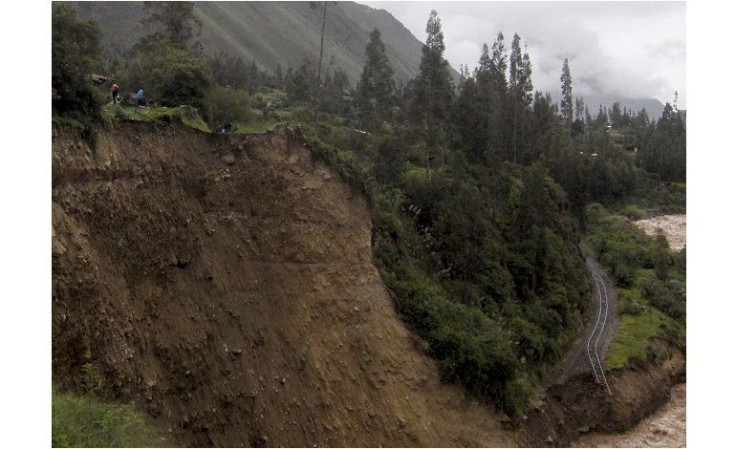
Researchers from Syracuse University's College of Arts and Sciences have recently published their findings, in Nature Geoscience, regarding the real cause of Peru's numerous landslides. While many previously believed global warming is the primary playing part behind Peru's natural disaster, the researchers have demonstrated that earthquakes are most likely the culprit.
"Geologic records of landslide activity offer rare glimpses into landscapes evolving under the influence of tectonics and climate," says Devin McPhillips, a research associate in the Department of Earth Sciences, whose expertise includes geomorphology and tectonics. "Because deposits from individual landslides are unlikely to be preserved, it's difficult to reconstruct landslide activity in the geologic past. Therefore, we've developed a method that measures landslide activity before and after the last glacial-interglacial climate transition in Peru."
McPhillips -- who co-wrote the article with Paul Bierman, professor of geology at The University of Vermont, and Dylan Rood, a lecturer at Imperial College London (U.K.) -- has studied the Quebrada Veladera river channel in the Western Andes with his team for years. The researchers spent their time chronicling the concentration of a nuclide, Beryllium-10 (Be-10), in the cobble in order to assess the erosion rates.
Their findings concluded that the erosion rates in terrace cobbles has not changed significantly over the past 16,000 years. This finding implies that climate change, caused by the Industrial Revolution, may not be responsible for the landslides that frequent the South American nation.
"This suggests that the amount of erosion from landslides has not changed in response to climatic changes," McPhillips says. "Our integrated millennial-scale record of landslides implies that earthquakes may be the primary landslide trigger."
"These concentrations provide a robust record of hill-slope behavior over long timescales," he adds. "Millennial-scale records of landslide activity, especially in settings without preserved landslide deposits, are an important complement to studies documenting modern landslide inventories."
In Peru, earthquakes are frequent since the nation is located near the Nazca oceanic plate and the South American crustal plate. The sliding of the two plates results in increased frequency of tectonic activity, reveal the researchers.
"Peru is rife with earthquakes, landslides, volcanic eruptions, and tectonic uplift," shares McPhillips. "By studying its past, we may be able to better predict and prepare for future calamities."
© 2025 Latin Times. All rights reserved. Do not reproduce without permission.




